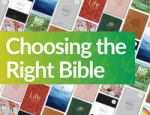Mothering Sunday - all the things you didn't know
Les Ellison
Giving flowers to mothers hasn’t always been the principle activity of the fourth Sunday in Lent. The day that marks the halfway point between lean times that follow Ash Wednesday and the celebratory feasting of Easter Sunday has had many other points of focus over the centuries.
Traditionally the fourth Sunday in Lent, Mothering Sunday was used in earliest times as day of light relief in the austere Lenten fast. For this reason known as Refreshment Sunday, fasting rules were slightly eased and even weddings were permitted to cheer the congregation and encourage them in their fast.
Laetare Sunday and Rose Sunday
In the liturgical calendar, the fourth Sunday of Lent was named Laetare Sunday. From the traditional Latin introit ‘Laetare Jerusalem’ (O be joyful, Jerusalem) it was a parallel day to Advent’s ‘Gaudete Sunday’ when the priest could wear more celebratory robes than the Lenten violet and flowers could be placed on the high alter.
In the Middle Ages, Mid Lent Sunday would also be know as Rose Sunday; celebrated as the day the pope sent golden roses as blessings for Catholic sovereigns. In pre-Vatican II times, the Mass for Mothering Sunday would include the passage about the miracle of the multiplication and the day celebrated as the ‘Sunday of the Five Loaves’.
Mid Lent Sunday’s best loved designation of Mothering Sunday acquired the sixteenth century tradition of ‘a-mothering’. On this Sunday people would return to the ‘mother church’, often the nearest large church or cathedral.
Demise of Mothering Sunday: the rise of Mother's Day
In the following centuries, Mothering Sunday became established as a day for families to reunite, celebrate and honour their mothers as the focus of the family. The demise of Mothering Sunday in the social upheaval of the early twentieth century was halted and reversed by two unrelated women’s campaigns, one on ach side of the Atlantic.
In the UK, Mothering Sunday might have passed completely out of modern life except for the daughter of Nottingham vicar, Constance Penswick-Smith. Her 1921 book inspired the ‘Mothering Sunday Movement’ which pressed for the revival of the Mothering Sunday tradition.
In the US, women’s activist Julia Ward Howe, and another Ann Jarvis, separately established ‘Mother’s Friendship Days’ to reunite families divided by the horrors and losses of the American Civil War. On 8 May 1914, Congress designated the second Sunday in May as Mother's Day in honour of mothers whose sons had died in war.
The mixing of American and British cultures in the years that followed World War Two led directly to the modern, American style of Mother’s Day celebrations on the ancient traditional Mothering Sunday of the English church.
Mothering Sunday: the trivia files
The other names attributed to the day celebrated as Mothering Sunday include Pudding Pie Sunday, as celebrated in the county of Surrey, England.
Latest Blogs

Bible
How to Choose the Right Bible Translation
NIV vs. NLT vs. ESV vs. KJV vs. NKJV: What's the difference? Our simple guide explains each bestselling Bible translation to help you choose the right one.

Study Bible
Are Study Bibles Good for Beginners? (And Which One Should You Choose?)
Wondering if a Study Bible is too advanced? We explain why it's actually the best tool for beginners and review the top 3 choices (NIV, NLT & ESV) to help you start.

Bibles
The NLT Bible: Is It Accurate? Your Top Questions Answered (2025)
Is the NLT accurate? Is it a paraphrase? We answer the top 10 questions about the New Living Translation Bible to help you choose with confidence + Get your Free 97-page Bible Buying Guide

Bibles
What is a Study Bible? Your Top 10 Questions Answered (2025 Guide)
Confused about the difference between a study Bible and a regular Bible? This guide breaks down the key features of each to help you find the right one for your reading and study needs.

Bible
Reading the Bible Like a Book: Why You Should Try a Reader's Edition Bible
Tired of distracting verse numbers? Discover "Reader's Edition" Bibles (Bibles without chapters and verses) and how they help you read Scripture like a story.

Bible
Choosing The Right Bible
With more than 20 English Language translations, each available in 25 or more different editions, the choice of Bibles excites and bewilders. Choosing the right Bible for you is important - even if you already have more than one + Get your Free 97-page Bible Buying Guide
